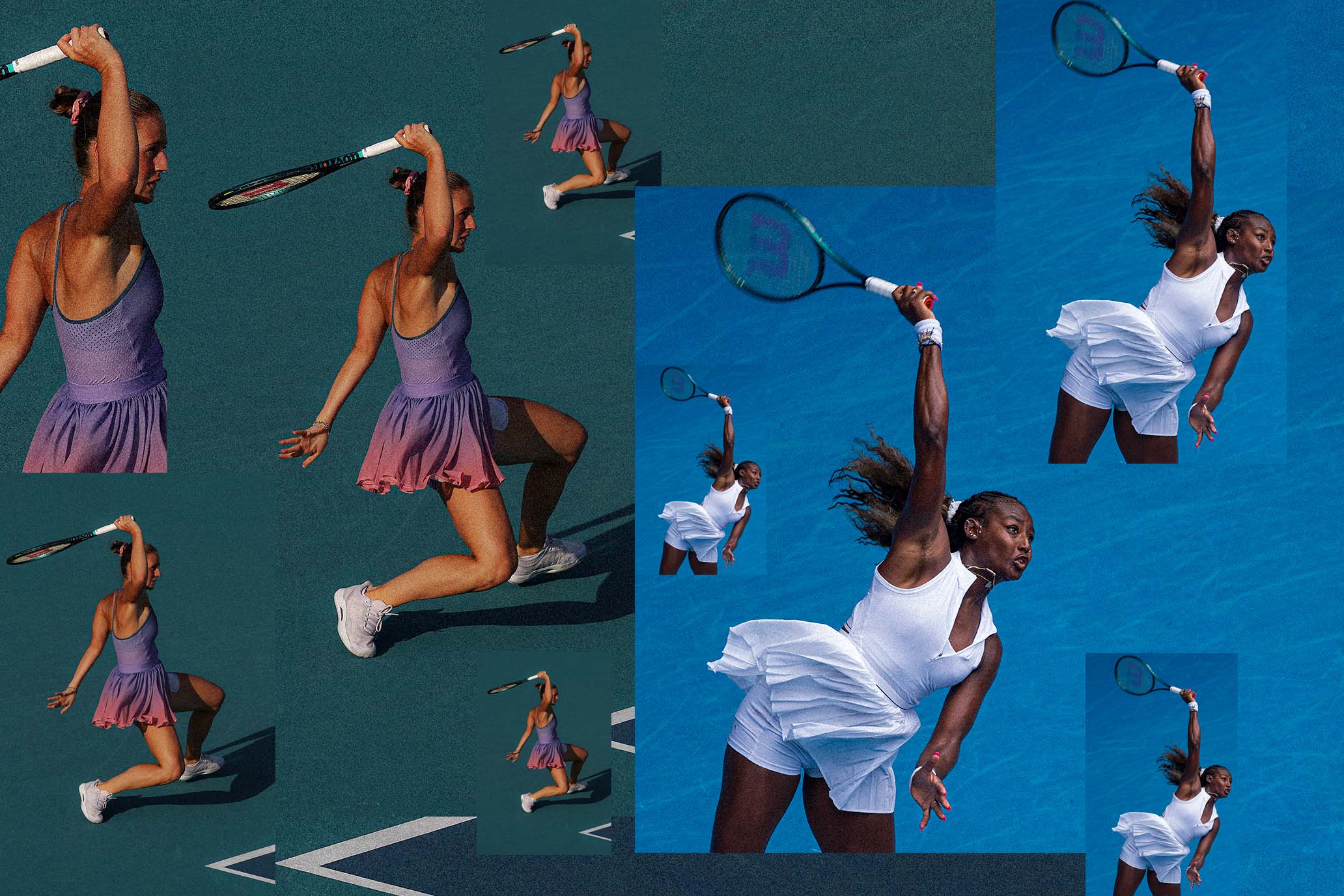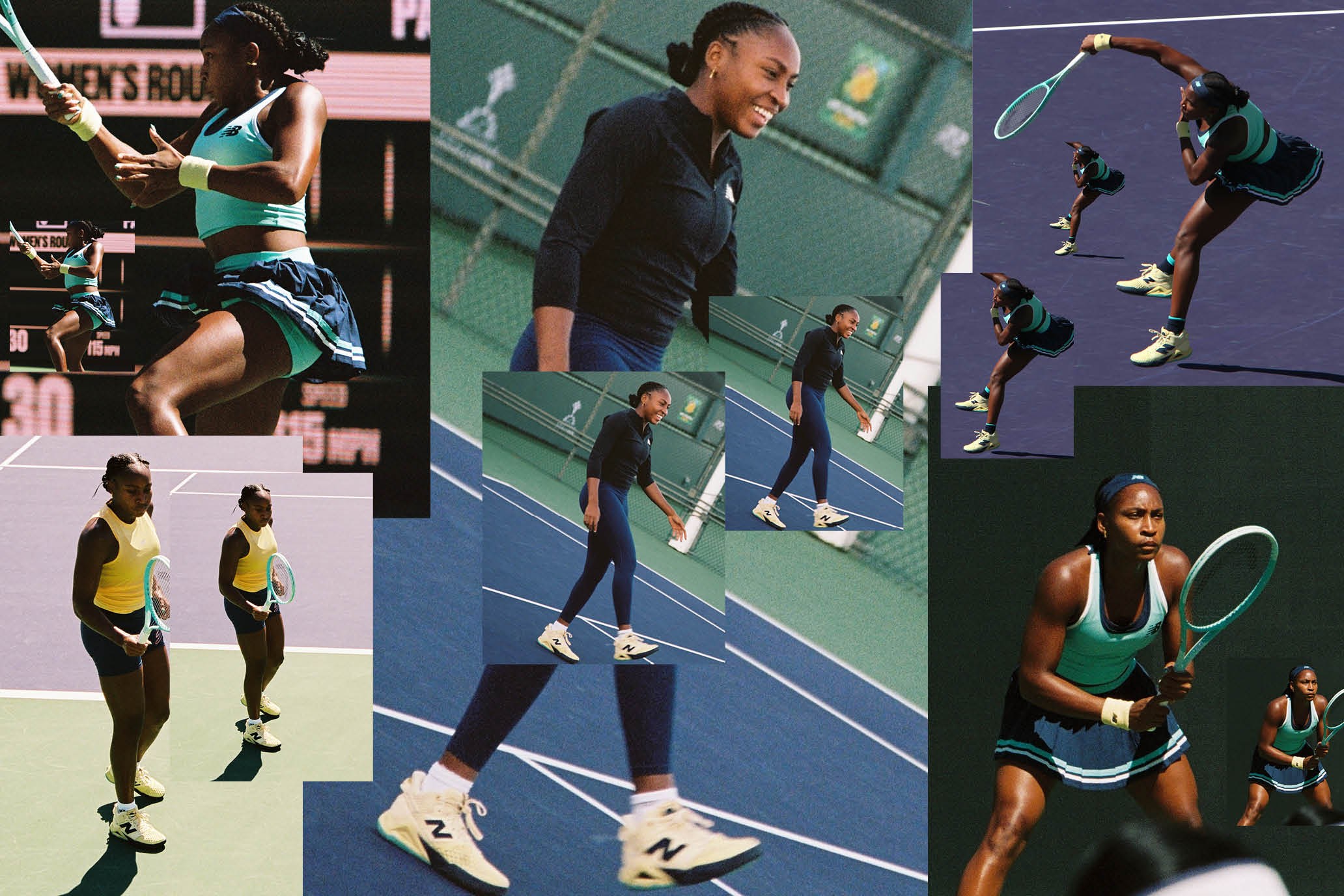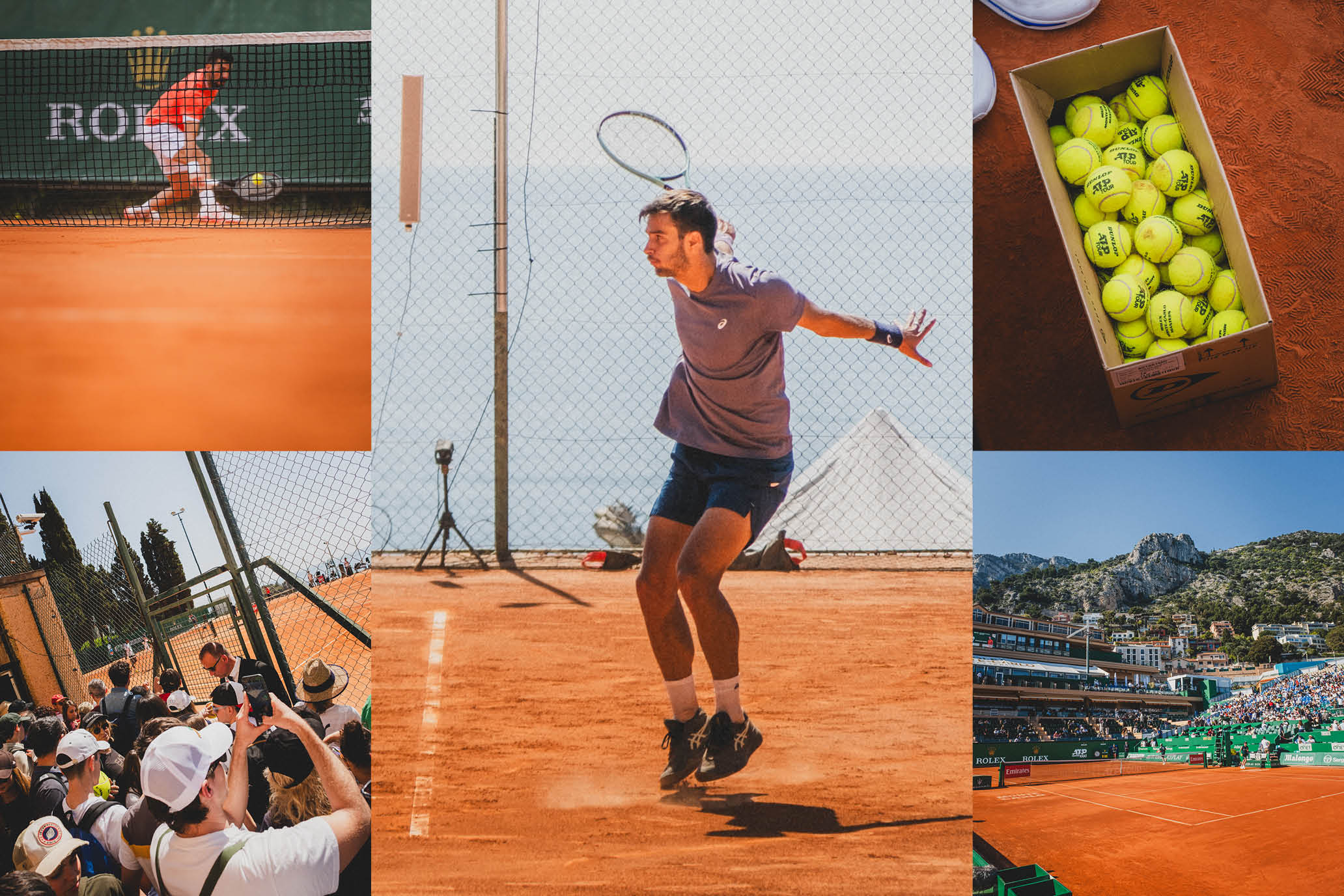London's Courts of Carnage
London's Courts of Carnage
Part of the challenge of playing Wimbledon is getting there in one piece.
Part of the challenge of playing Wimbledon is getting there in one piece.
By Ben RothenbergJune 21, 2024
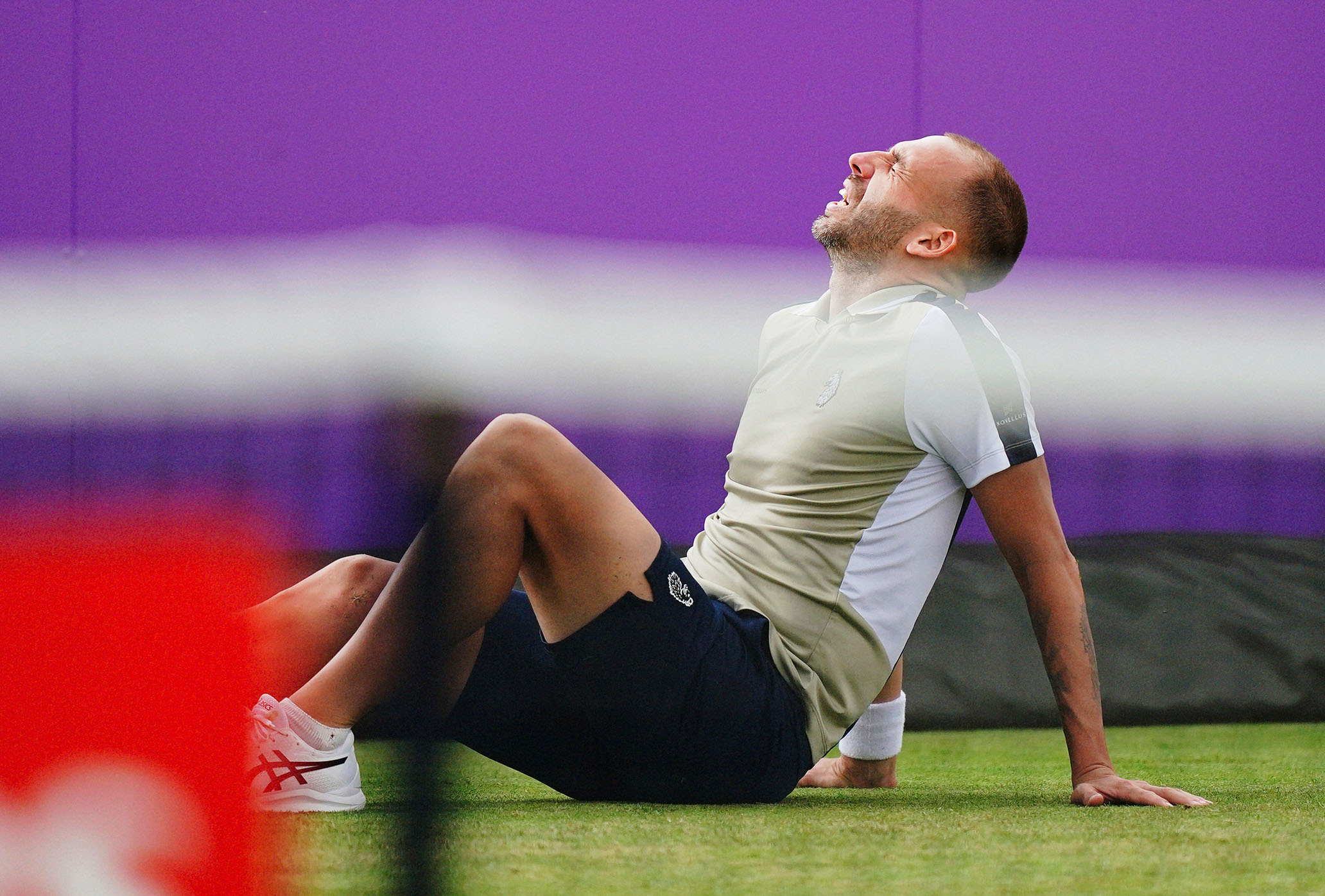
Dan Evans' ass is grass. // AP Images
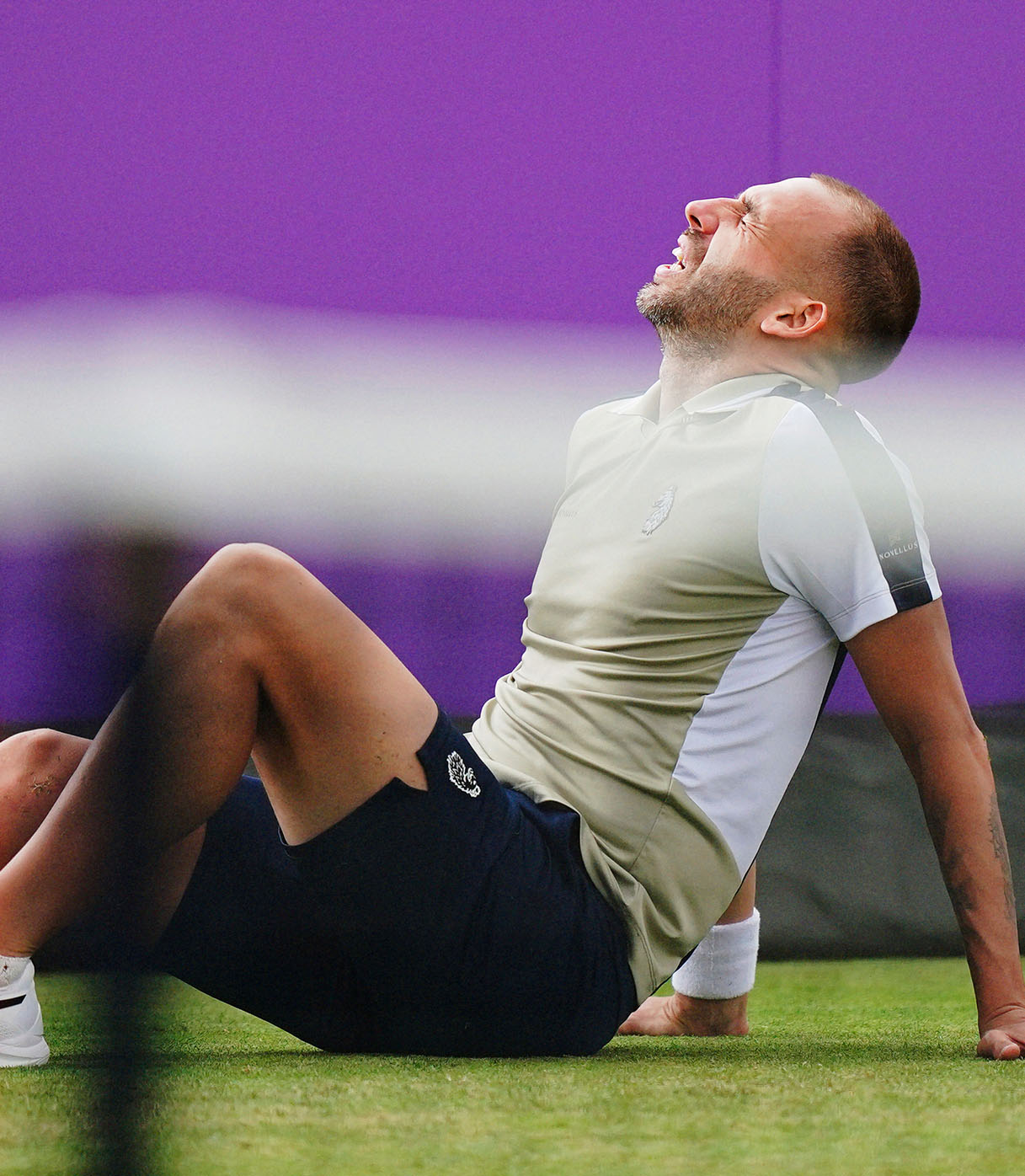
Dan Evans' ass is grass. // AP Images
The grass court season usually begins as it ends, with players on the ground. At the end of the grass campaign in mid-July, those players are collapsing to the lawn in delighted, disbelieving delirium, having just won Wimbledon. And these victories are nearly always the most satisfying to behold, as grass court tennis reliably proves some of the most watchable of the season for me. After the slog of clay, I love how grass rewards proactive, purposeful play. A player is rewarded both for hitting the ball hard and for hitting the ball at an unexpected angle or spin. Passive pushers get punished, which pleases me.
But at the beginning of each grass court tournament, the players are down on the ground unintentionally, having slipped and fallen on grass that is still sumptuously moist and slick. Sometimes the players get right back up quickly, other times it’s slowly. Sometimes slips that look catastrophic prove harmless; sometimes a short skid is career-altering. Grass court tennis is the wrong kind of suspenseful in this way, especially at the front end of each tournament.
As I watched one of the most creative craftswomen of the game, Bianca Andreescu, playing the grass court WTA tournament in ‘s-Hertogenbosch last weekend, my primary emotion was trepidation. Andreescu’s career has been derailed time and again by injury, and she’d slipped and fallen several times on the grass. When it looked like she was limping at one point, I wished she would stop before it got worse; I winced as it looked like she might risk another sidelining injury.
Even after I had started writing this piece, my fears were further justified: Defending Wimbledon champion Marketa Vondrousova slipped and fell awkwardly in Berlin and was forced to retire from the match. Her health outlook for a title defense (which would admittedly be a long shot) is unclear.
Grass can be so treacherous. pic.twitter.com/mPF9xAJF5x
— Tennis Blockade (@tennisblockade) June 20, 2024
But though many grass courts have their slippery streaks—even Wimbledon’s Centre Court took out Adrian Mannarino and Serena Williams in consecutive first-round matches in 2021—nowhere in tennis seems as time-testedly treacherous as the most upper-crust venue on the ATP Tour: Central London’s Queen’s Club. As attendees at arguably the snootiest stop on tour sip champagne, the lush grass has consistently caused top male players to slip and fall awkwardly; this week, both Frances Tiafoe and Dan Evans were felled as their feet went out from under them (Tiafoe said he has a grade 1 MCL sprain but hopes to recover for Wimbledon).
Queen’s Club’s outdated policy of not allowing players to practice on match courts before the tournament begins, making them maximally slick and unscuffed when competition begins, seems to be the major factor in the danger; Wimbledon used to have a similar policy, but reversed it after the spate of slips in 2021.
Another former U.S. men’s No. 1 who was watching Tiafoe’s injury empathized. “Queens is undoubtedly one of the best events of year, but the courts are diabolically slippery, especially on Monday and Tuesday,” John Isner tweeted. “Sucks for Frances, hope he can recover for SW19.” Isner, who famously spent longer on a grass court than anyone ever had before, said he didn’t have time for Queen’s Club late in his career. “Swore it off the last 7 years of my career,” the 6-foot-10 Isner wrote. “Big tree fall hard.”
Thanasi Kokkinakis, who like Andreescu has had his career derailed by injuries, chimed into Isner’s thread and confirmed that he had pulled out after winning in the first round of qualifying out of fear of injury if he stepped onto the courts again. “Yea man, so slippery out there,” Kokkinakis said.
The Lawn Tennis Association, the national governing body for tennis in Britain, has responded to the trend of players dropping in an amusing but profoundly unhelpful way, remixing the falls with footage of dancers shablamming to the ground.
Most players are reluctant to put Queen’s Club on full blast despite this apparent disregard for player safety, even as they agree on the conditions. “I mean, to be honest, it’s my complaint every year, I think: The courts are a little too slippery here,” Taylor Fritz told reporters after his first-round win at Queen’s Club this week. “Pretty much every year, someone takes a fall, I always feel like. I mean, don’t get me wrong, the courts are obviously very good grass courts, but, I mean, I feel like every year once I go to Eastbourne and Wimbledon from here, I feel like I have much more traction on the court. I feel like, here, I always have to watch it a little bit. I feel like I never move my best because I’m a little scared about it.”
As Isner had added in his tweet, the ultimate proof of the carnage at Queen’s Club is one of the game’s most missed: “Just ask Delpo,” Isner said.
Indeed, Juan Martin del Potro skidded slightly as he approached the net late in a first-round win over Denis Shapovalov at Queen’s Club in 2019. He finished the match and didn’t play another for nearly three years, a feeble farewell in Buenos Aires.
Long out of the game at just 35 years old, del Potro recently announced plans to open a namesake academy in Palm Beach County, Fla. The academy will be staged at the Indian Springs Country Club in Boynton Beach, which boasts 26 courts.
There will be 20 clay courts, six hard courts, and zero grass courts.
Ben Rothenberg is the author of Naomi Osaka: Her Journey to Finding Her Power and Her Voice.

The Hopper
—Emma Raducanu will not play on Andy Murray-led Olympics squad.
—And Sir Andge’s retirement is imminent.
—Wimbledon wild cards have been announced.
—And Billy Harris has received one of them.
—Ash Barty is returning to Wimbledon.
—Independent High-End Outdoors magazines are thriving.
—Serena Williams goes Hollywood.
—Sports Illustrated gets a new lease on life.

